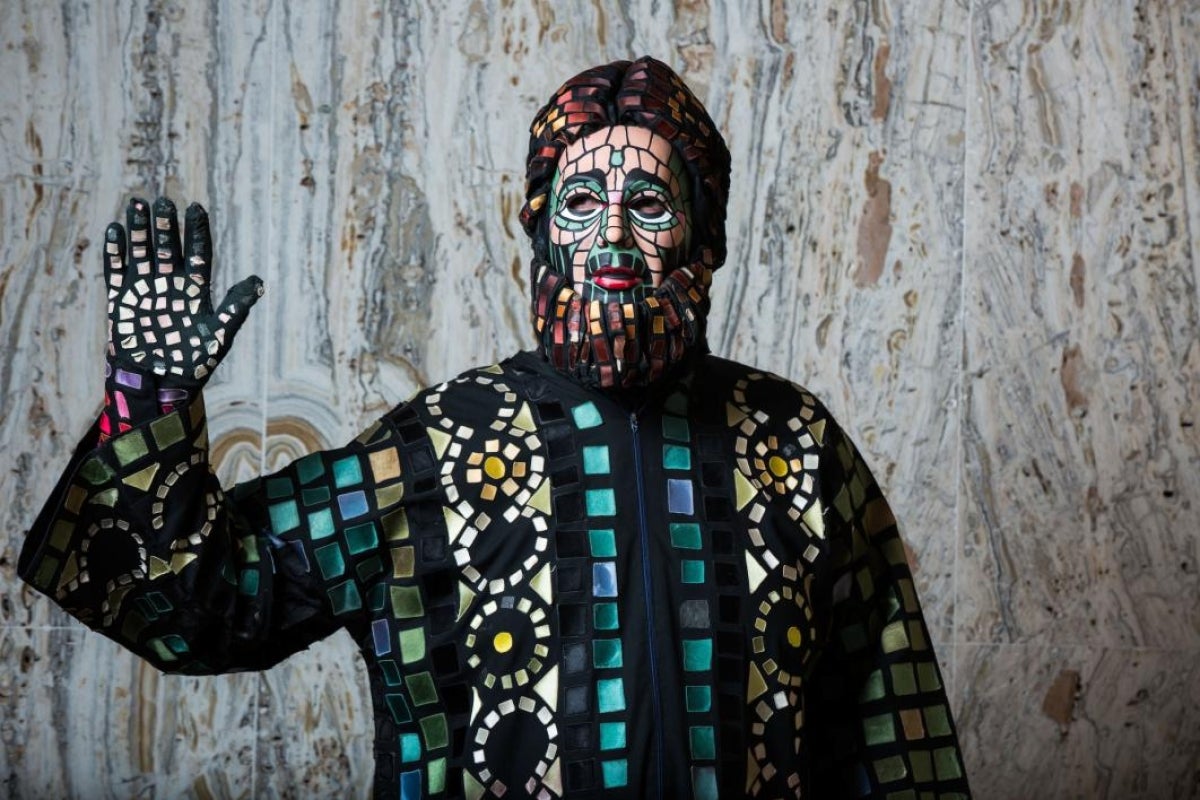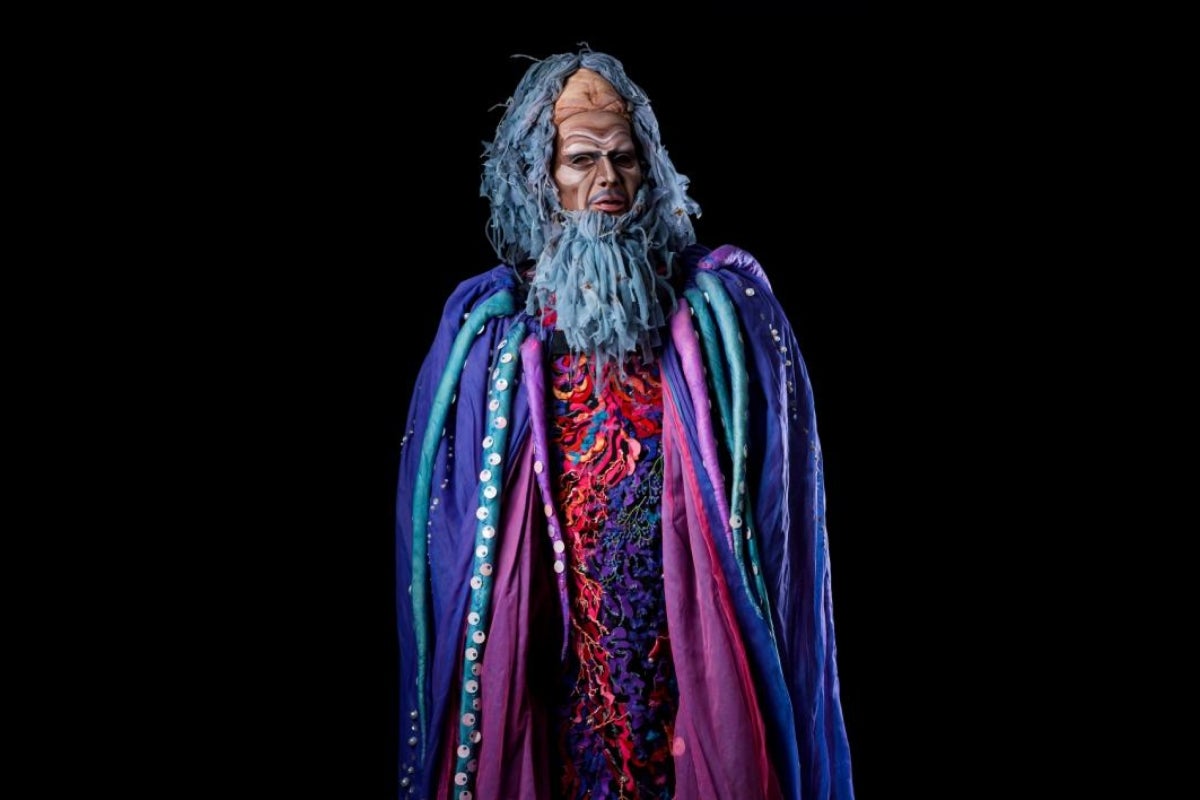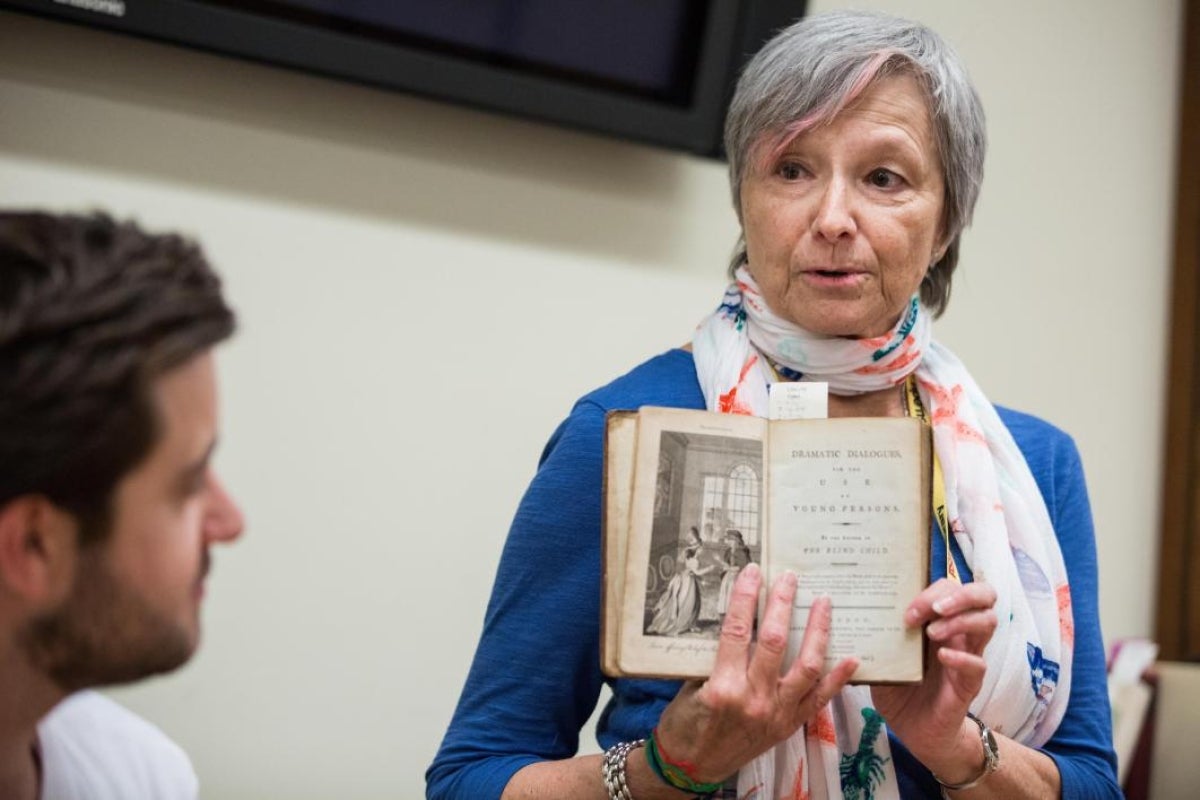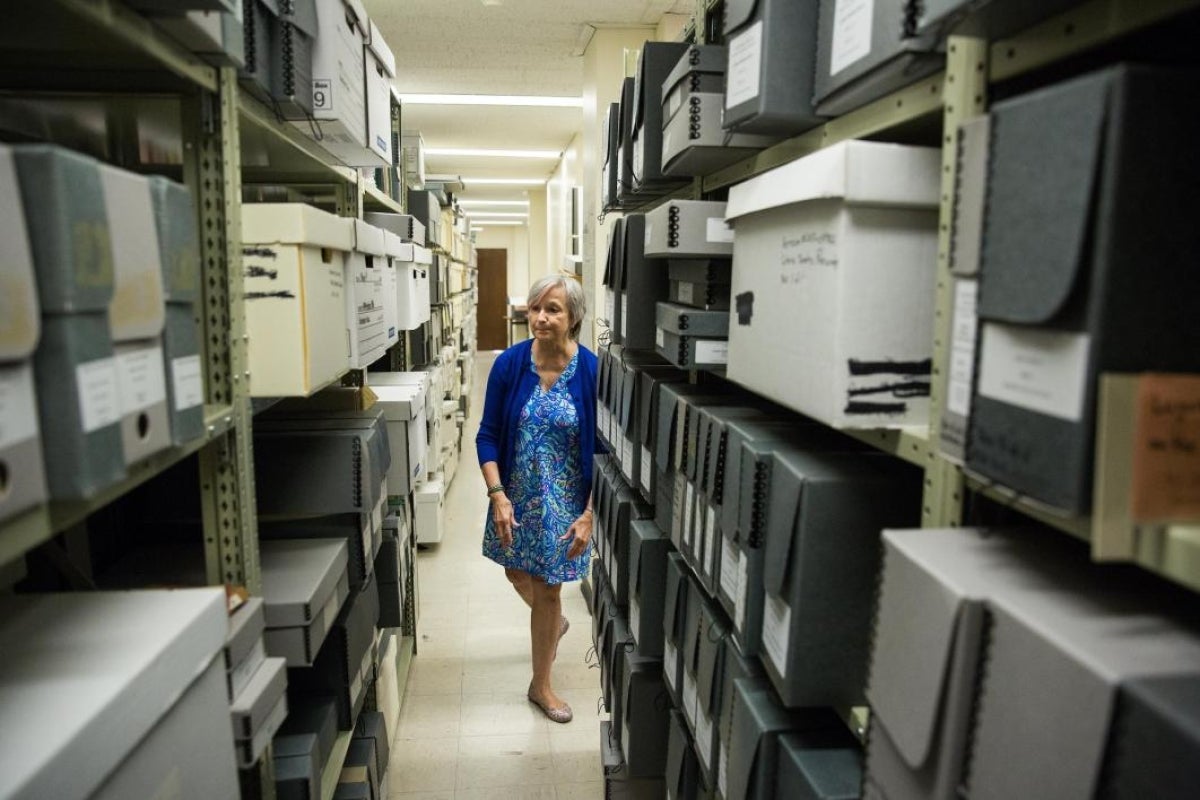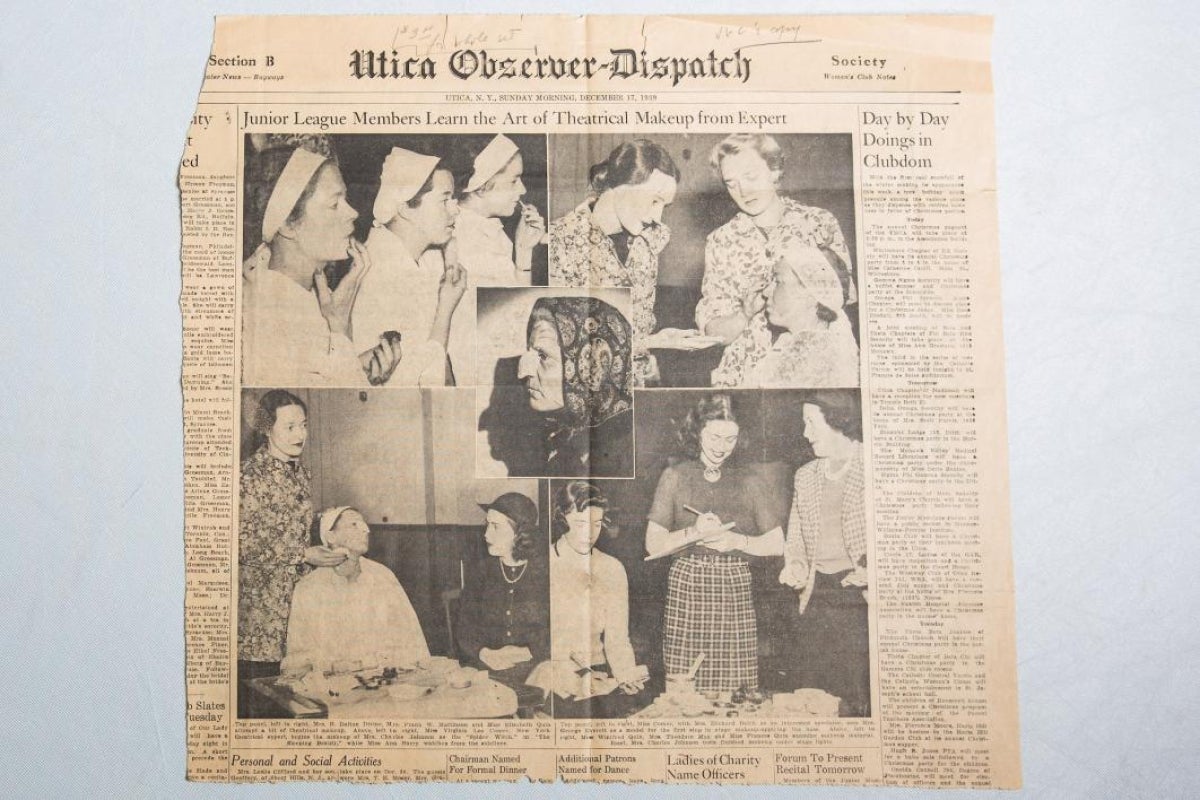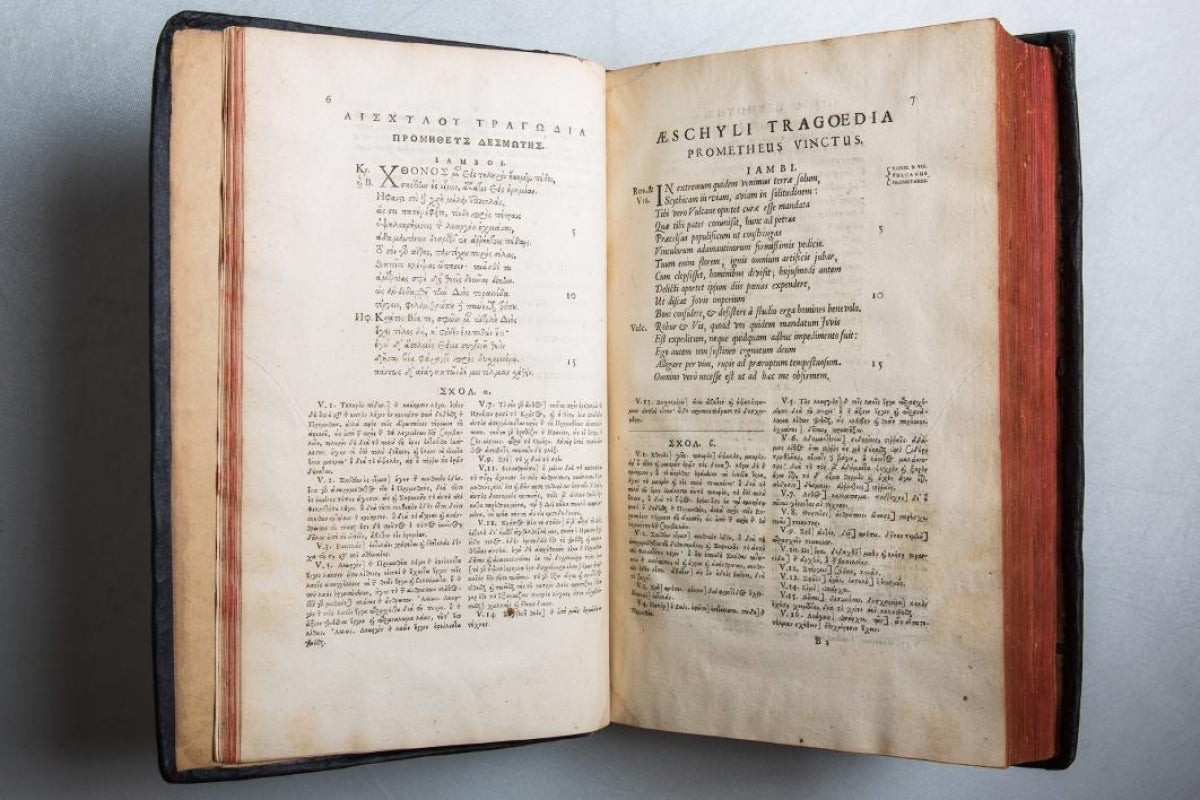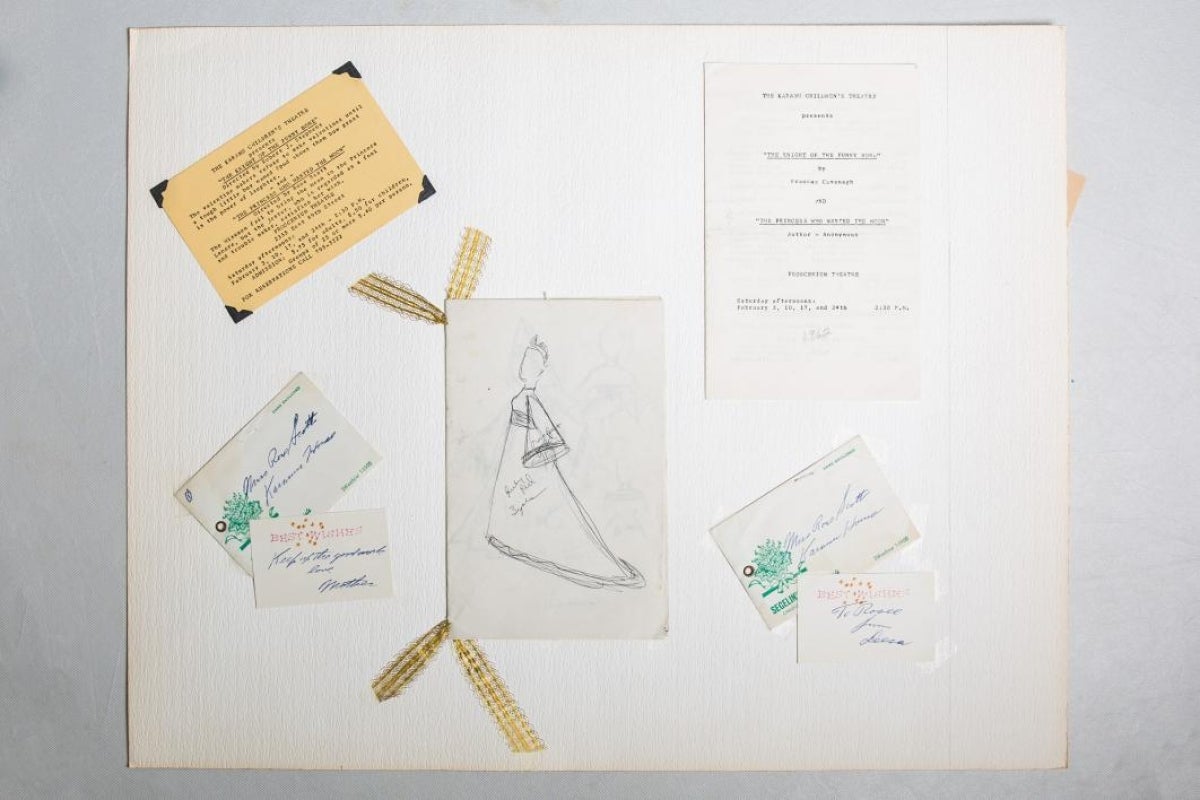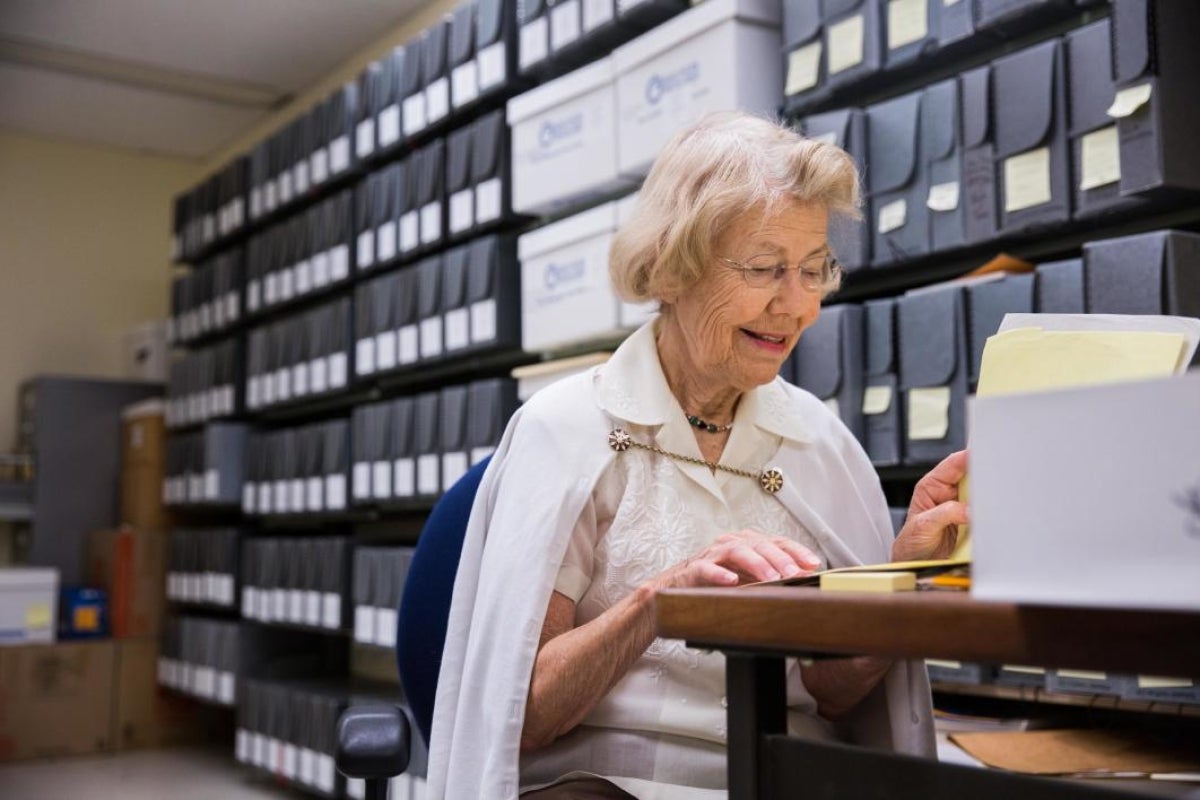Arizona State University’s Child Drama Collection is the largest, most utilized and internationally renowned youth-theater repository in the world, according to university officials.
It lures scholars, playwrights, performers and students from around the world to study its costumes, scripts, designs and ephemera — but the reach for one of its most prized portions has been limited to those who could journey to Hayden Library in Tempe.
By the end of the year, however, a listing of the contents of the Irene Corey Collection will become accessible to everyone online. Then, Katherine Krzys believes, “people will be coming in throngs.”
“Irene Corey literally changed the face of costume and makeup design,” said Krzys, who, among other roles — archivist, actress, director, author and historian — is the curator of the Child Drama Collection.
“All those innovations are documented visually and in print in her archive for scholars and artists to discover. It’s a one-of-a-kind source that will inspire generations of new theatrical artists.”
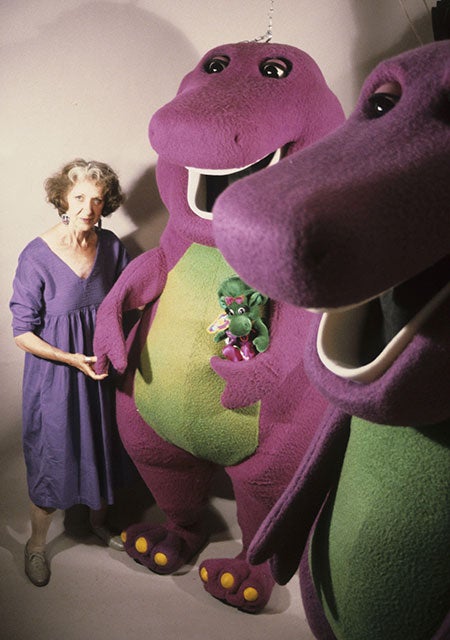
Irene Corey and Barney, one of her most famous creations.
For over a half-century Corey designed costumes, sets and makeup for shows as varied as theater classics and theme-park characters. Corey first became nationally known for the “Book of Job” in the 1950s, which had 22-year run throughout the world.
She also designed the costumes for the television show “Barney and Friends” (including the friendly dinosaur's trademark purple color) and helped create the first Chick-fil-A cows and Half Price Books’ Bookworm. Many in the field also believe without Corey’s visionary work audiences would not have seen “Cats” or “Lion King” on Broadway.
Among the collection's items are Corey’s innovative costumes for “The Tempest” and “The Book of Job,” animal makeup renderings, production photographs, costume renderings and her historical and cultural research files.
“Irene was really into process, and when you look at this collection, you’re going to see little ideas on the back of menus, on the back of envelopes,” Krzys said. “Her process is the most important thing the collection can tell you.”
It can also tell you that Corey’s life’s work is worth a pretty pennyCorey died of Parkinson’s disease in 2010. She was 84.. Originally valued at $200,000 at the time it was donated in 1995, today it's possible the collection is worth millions said Lynda Xepoleas, an art history major at ASU’s School of ArtThe School of Art is a unit within the Herberger Institute for Design and the Arts. and aide in the ASU Library conservation lab.
“I once worked on a Marc Chagall costume exhibit, and he and Irene Corey were top artists in their respective fields,” said Xepoleas, who is working with Krzys to preserve the costume portion of the collection. “The things I see in Irene’s collection are just as impressive as what I saw in his exhibit.”
For the past few months Xepoleas has been creating hanging and boxed storage for costumes, props, masks, wands, headpieces, belts and gloves. She said working with these items has given her an insight into Corey’s creative process.
“She wanted these costumes and props to be seen from a distance rather than be functional,” Xepoleas said. “To witness history up close has been very rewarding for me.”
Krzys said it took over a decade to convince Corey to donate her papers to ASU.
“I went personally to pack up her papers at her art-filled house in Dallas — finding costumes in the dirt crawl space of her outdoor studio, renderings under the sideboard in her dining room — wherever she had space,” Krzys said. “The process was filled with laughter, amazing stories, advice for designers and a lifelong friendship.”
The Irene Corey Collection is a part of the Child Drama Collection, the largest compilation in the world documenting the international history of children's theater back to the 16th century.
It was established at ASU in 1979 by librarian Marilyn Wurzburger, head of Special Collections, and by Lin Wright, chair of the ASU Department of Theatre. They jointly recommended the development of a Child Drama Collection in response to the academic needs of youth-theater students and faculty at ASU and the research needs of professional artists and educators throughout the world.
Video by Deanna Dent/ASU Now
The first collection donated to the university, Wurzburger said, came from Rita Criste, a children’s theater professor at Northwestern University in Evanston, Illinois, who donated her papers and books to ASU.
“Every university library likes to distinguish themselves because they know it will give them a certain prestige. They know people will come from around the world to look at a collection,” said Wurzburger, who started at ASU in 1960 and retired in 2009.
Those people include John Newman, a theater professor at Utah Valley University who brought four theater students with him in July to view the collection. The students recently received a grant to research and develop a new play for the Utah Children’s Theatre called “Builders of America,” based on several historic American characters.
“The students were so engaged in research that it was hard to pull them away from the process,” Newman said. “We were greeted by the character Job, who was in an original Irene Corey costume, and it was a great introduction to the collection.”
Newman added that the collection captured the imagination of each of his students — a designer, a playwright, a director and a dramaturgeA dramaturge is a professional writer/editor within a theater or opera company who deals mainly with research and development of plays or operas..
“Kathy was able to find something that appealed to their individual or found a tangent that extended their interest,” Newman said. “It was an exceptional experience.”
Ashley Laverty, an MFA graduate from the School of Film, Dance and Theatre’s Theatre for Youth program in the Herberger Institute for Design and the Arts, said she spent a good portion of her academic career perusing through the collection, drawing inspiration for her work.
“I used the collection pretty steadily all three years I was in grad school at ASU, and it was a huge resource for me,” said Laverty, who now works for the Rose Theater, a premiere performing-arts venue in Omaha, Nebraska. “I’m lucky to have been in a program where I could literally ask Kathy about a play and she knows how to get it.”
Wurzburger said once a university starts building a collection, others begin to notice.
“People start to think, ‘I’d like my papers to sit beside those,’” Wurzburger said. “When you get a good start, there’s hope you can build on that.”
Wurzburger was able to build on the collection through a key recruit she made in 1985 by enlisting the help of Krzys, who was then a graduate research assistant in the ASU MFA Theatre for Youth Program. Krzys said she had a job lined up at a children’s theater in San Francisco once she had obtained her master’s degree. She said she was required to write a research-methods paper and had stumbled upon the Child Drama Collection.
It was Krzys who oversaw the transfer of the collection from typewriter-generated finding aids into computer searchable lists of contents. The collection started with 132 books and 100 linear feet of archival collections. Today it contains more than 9,200 books, 294 periodical titles, more than 2,000 audio-visual media, and almost 5,000 linear feet of manuscript collections, documenting professional theater for young audiences, youth theater and toddler-through-high-school theater education.
Other highlights of the Child Drama Collection include:
• Jonathan Levy Collection: Donated in 1999, it contains more than 350 books with copyrights from the 17th through 20th centuries, and manuscripts chronicling Levy's academic and professional career. Prior to getting this archive, the Child Drama Collection had documented the history of the field only from 1900 onward. The Levy collection expanded research possibilities back to the 16th centuryJonathan Levy also did research into what was happening in children’s theater in the 16th century; his personal research is included in the manuscripts he donated along with his library. In addition, books from the 17th century covered 16th-century events. and made the Child Drama Collection the largest repository of materials on youth theater in the world.
• Lowell and Nancy Swortzell Theatre Arts Collection: The award-winning Swortzells, who created the Educational Theatre Program at New York University, saved every scrap of paper — every letter, photo and class note — and started donating them to the Child Drama Collection so that their scholarship and teaching methods could be shared by scholars. This was the largest single donation of books and manuscripts to the Child Drama Collection.
• The David, Sonja and Benjamin Saar Yellow Boat Collection: It contains framed drawings, posters, correspondence from audience members, letters and drawings from schoolchildren, photographs, press releases and other materials documenting the writing and production of “The Yellow Boat,” a play Saar wrote for his son Benjamin, a hemophiliac who contracted AIDS through a blood transfusion and was asked to leave his private school.
• Childsplay Records: ASU not only collaborates frequently with Tempe-based Childsplay Theatre but houses its archives. It includes video cassette tapes and DVDs from productions, scripts, posters, workshop and planning materials, and set models.
Krzys, who had once envisioned a life directing children’s theater only to spend the next three decades at ASU, says her life ended up having more purpose because of the power, reach and influence of the collection.
“I would have never thought I’d be a librarian for more than 30 years, but I stayed for a variety of reasons. I’m a big believer in fate,” Krzys said.
“I’ve been all around the world. I’ve met amazing people. And I don’t regret a single moment of my career.”
Top photo: Special collections preservationist Lynda Xepoleas presents two masks from the Irene Corey Collection at Hayden Library on Sept. 6 in Tempe. Photo by Deanna Dent/ASU Now
More Arts, humanities and education

A humanities link from Harvard to ASU
Jeffrey Wilson didn’t specifically seek out Arizona State University professors when it came to filling out the advisory board for his new journal Public Humanities.“It just turns out that the type…

ASU professor’s award-winning book allows her to launch scholarship for children of female shrimp traders in Mexico
When Arizona State University Associate Professor Maria Cruz-Torres set out to conduct the fieldwork for her third book, "Pink Gold," more than 16 years ago, she didn’t count on having major surgery…

Herberger Institute Professor Liz Lerman to be honored as Dance Magazine Award winner
Dance Magazine has announced that Arizona State University Herberger Institute Professor Liz Lerman will be honored as a Dance Magazine Award winner at a ceremony Dec. 2 in New York City.“I…

